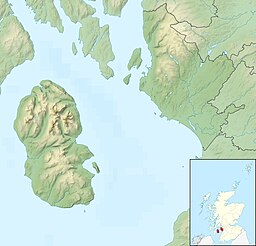| Ashgrove Loch | |
|---|---|
| Stevenston Loch | |
 Ashgrove Loch, from its southern shore | |
| Location | Scottish Lowlands |
| Coordinates | 55°39′42″N4°44′38″W / 55.66167°N 4.74389°W |
| Primary outflows | Loch Canal |
| Basin countries | Scotland, United Kingdom |
| Max. length | 540 m (1,770 ft) |
| Max. width | 300 m (980 ft) |
| Surface elevation | 54 m (177 ft) |
Ashgrove Loch, also known as Stevenston Loch, is a mesotrophic lochan [1] (small loch) in North Ayrshire, Scotland, approximately 2 km northeast of the town of Stevenston.
Due to artificial drains, known as cunnels, [2] approximately 90% of the lochan's surface is covered by floating vegetation and is classed as a fen. The lochan sustains rich plant life, including two rare species, Lysimachia thyrsiflora and Cicuta virosa . [1]
Many bird species also use the lochan, including the grasshopper and sedge warblers. [1]
Ashgrove Loch sits on a bed of Carboniferous limestone [3] and thus has a high mineral content. [1]
The lochan's primary outflow, Loch Canal, is an artificial burn regulated by a sluice at Lochend, having previously powered a watermill there. [4]
